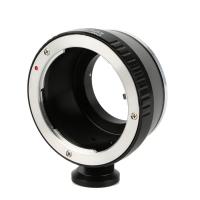Which Microscope Has A Higher Magnification ?
The electron microscope has a higher magnification than the light microscope.
1、 Electron microscope
Which microscope has a higher magnification? The answer is the electron microscope. This type of microscope uses a beam of electrons instead of light to magnify objects, allowing for much higher magnification and resolution than traditional light microscopes.
Electron microscopes have been around since the 1930s and have continued to evolve and improve over the years. Today, there are two main types of electron microscopes: transmission electron microscopes (TEMs) and scanning electron microscopes (SEMs).
TEMs use a thin sample that is placed on a grid and then bombarded with a beam of electrons. The electrons pass through the sample and are then focused onto a screen or detector, creating an image of the sample. TEMs can achieve magnifications of up to 10 million times, allowing scientists to see individual atoms and molecules.
SEMs, on the other hand, use a beam of electrons to scan the surface of a sample. As the electrons interact with the sample, they create a three-dimensional image that can be viewed on a screen. SEMs can achieve magnifications of up to 500,000 times, making them useful for studying the surface structure of materials.
In recent years, advances in electron microscopy have led to new techniques such as cryo-electron microscopy, which allows scientists to study biological molecules in their natural state. This has led to breakthroughs in fields such as drug discovery and structural biology.
Overall, the electron microscope has a higher magnification than traditional light microscopes, making it an essential tool for scientists in a wide range of fields. As technology continues to improve, we can expect even more exciting developments in the world of electron microscopy.

2、 Scanning probe microscope
Which microscope has a higher magnification? The answer is the Scanning Probe Microscope (SPM). SPM is a type of microscope that uses a physical probe to scan the surface of a sample to create an image with extremely high resolution. The SPM can achieve magnifications of up to 100 million times, which is much higher than any other type of microscope.
The SPM has revolutionized the field of nanotechnology by allowing scientists to study and manipulate materials at the atomic and molecular level. It has also been used in various fields such as biology, chemistry, and physics to study the properties of materials and biological samples.
The SPM works by scanning a sharp probe over the surface of a sample. The probe is so small that it can detect the atomic and molecular structure of the sample. The SPM can create images of the sample by measuring the interaction between the probe and the sample surface. This interaction can be used to create a three-dimensional image of the sample with extremely high resolution.
In recent years, there have been advancements in other types of microscopes such as the electron microscope, which can also achieve high magnifications. However, the SPM still holds an advantage in its ability to study samples in their natural state, without the need for special preparation or staining.
In conclusion, the Scanning Probe Microscope has a higher magnification than any other type of microscope. Its ability to study samples at the atomic and molecular level has revolutionized the field of nanotechnology and has been used in various fields of science.

3、 Confocal microscope
Which microscope has a higher magnification? The confocal microscope has a higher magnification compared to other types of microscopes. This is because the confocal microscope uses a laser beam to scan the sample, which allows for a higher resolution and magnification. The confocal microscope can magnify up to 1000 times, which is higher than the magnification of a light microscope, which can magnify up to 400 times.
Moreover, the confocal microscope has become an essential tool in modern biological research due to its ability to produce high-resolution images of biological samples. It is widely used in the study of cells, tissues, and organs, as well as in the study of diseases such as cancer. The confocal microscope has also been used in the field of neuroscience to study the structure and function of the brain.
In recent years, there have been advancements in confocal microscopy technology, such as the development of super-resolution microscopy, which allows for even higher magnification and resolution. Super-resolution microscopy has enabled researchers to study biological structures at the nanoscale level, which was previously impossible with traditional microscopy techniques.
In conclusion, the confocal microscope has a higher magnification compared to other types of microscopes, making it an essential tool in modern biological research. With advancements in technology, the confocal microscope continues to evolve, allowing researchers to study biological structures at even higher magnifications and resolutions.

4、 Super-resolution microscope
Which microscope has a higher magnification? The answer is the super-resolution microscope. This type of microscope has revolutionized the field of microscopy by allowing scientists to see structures and details that were previously impossible to observe with traditional microscopes.
Super-resolution microscopes use advanced techniques such as stimulated emission depletion (STED) microscopy, structured illumination microscopy (SIM), and single-molecule localization microscopy (SMLM) to achieve resolutions beyond the diffraction limit of light. This means that they can visualize structures that are smaller than the wavelength of light, which is typically around 500 nanometers.
The latest advancements in super-resolution microscopy have allowed scientists to observe biological processes at the molecular level, such as the movement of individual molecules within cells. This has led to new insights into the mechanisms of diseases and the development of new treatments.
In addition to their high magnification capabilities, super-resolution microscopes also offer other advantages over traditional microscopes. They can image samples in three dimensions, allowing for a more complete understanding of complex structures. They also use less damaging forms of light, which reduces the risk of damaging delicate samples.
Overall, the super-resolution microscope is a powerful tool for scientific research and has opened up new avenues for discovery in a wide range of fields, from biology to materials science.































